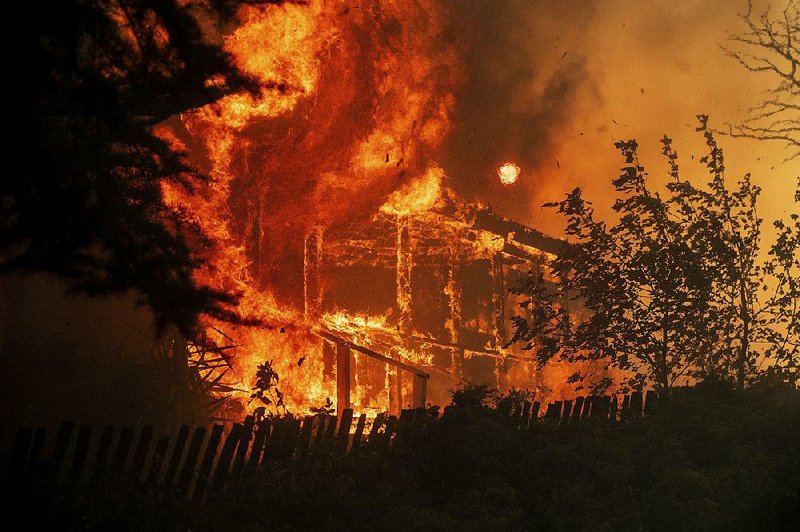SACRAMENTO, Calif. -- As fire crews struggled to gain containment on more than a dozen wildfires raging across California on Wednesday, Gov. Jerry Brown told reporters that large, destructive fires would probably continue and cost the state billions of dollars over the next decade.
"The more serious predictions of warming and fires to occur later in the century, 2040 or 2050, they're now occurring in real time," Brown said at a news conference at the state's emergency operations center outside Sacramento.
State officials said more than 13,000 firefighters are currently on duty, fighting 16 large fires that have burned a total of 320,000 acres and displaced more than 32,000 residents. Seventeen states have offered assistance to California during the past week, sending help from as far away as Maine and Florida. Though the state has the resources now to combat the large wildfires, fighting them and keeping people safe will become harder, Brown said.
"Things will get much tighter in the next five years as the business cycle turns negative and the fires continue," Brown said.
Brown said that current conditions are part of a long cycle that began with the rapid rise in greenhouse gases caused by human activity.
The state's latest wildfire ignited Tuesday afternoon in northern Mendocino County, about 9 miles east of Covelo. The Eel fire, as it is being called, was uncontained after burning 865 acres as of Wednesday morning, according to the California Department of Forestry and Fire Protection.
The fire is traveling through quick-burning grass and oak in a rural area of rolling hills that can become steep and difficult to access, California Department of Forestry and Fire Protection Deputy Chief Scott McLean said.
Another blaze that ignited Tuesday in Mono County north of Mammoth Lake, called the Owens fire, was 312 acres and also uncontained as of Wednesday morning, according to authorities.
The largest and deadliest of the wildfires currently burning in California is the Carr fire, which as of Wednesday morning had burned 115,538 acres and was 35 percent contained.
Fire crews have been battling the blaze in triple digit heat. On Wednesday, however, forecasters said temperatures will return to normal, or close to it, by this weekend. Temperatures will reach the high 90s and humidity will hover around 20 percent, said Roy Skinner, a spokesman for the California Department of Forestry and Fire Protection.
"Any break in the weather is appreciated -- we're at 35 percent containment," he said. "However, we don't want people to be complacent, or on edge."
Still, as a low-pressure system approaches from the west, the area could see shifting winds and gusts of up 30 miles per hour, said National Weather Service meteorologist Tom Dang.
"This fire has a very unique personality," said Jason Shanley, a spokesman for the Carr fire. It's been active at night, while a stubborn inversion layer has kept smoke low to the ground and hindered air support during the day. Conditions also spawned a fire tornado that ripped through parts of Redding.
The fire is now mostly burning on its western flank. On the eastern end, more and more of the 38,000 fire evacuees have been allowed to return to their homes -- or what is left of them -- in and around Redding.
The Carr fire has claimed six lives so far -- those of a Redding fire inspector, a private bulldozer contractor and four civilians. It has also destroyed 1,465 structures, becoming the sixth most destructive wildfire in recorded California history.
Containment is also increasing on the two fires in southern Mendocino County. As of Wednesday morning the Ranch fire was 15 percent contained after burning 59,014 acres, while the River fire had spread across 31,898 acres and was 38 percent contained.
Fire officials anticipate that the Ferguson fire near Yosemite National Park will intensify and spread farther into the central Sierra Nevada mountain range, a change in behavior caused largely by the shifting weather patterns expected in the next few days. As of Wednesday, the fire had scorched 62,883 acres.
A Section on 08/02/2018
